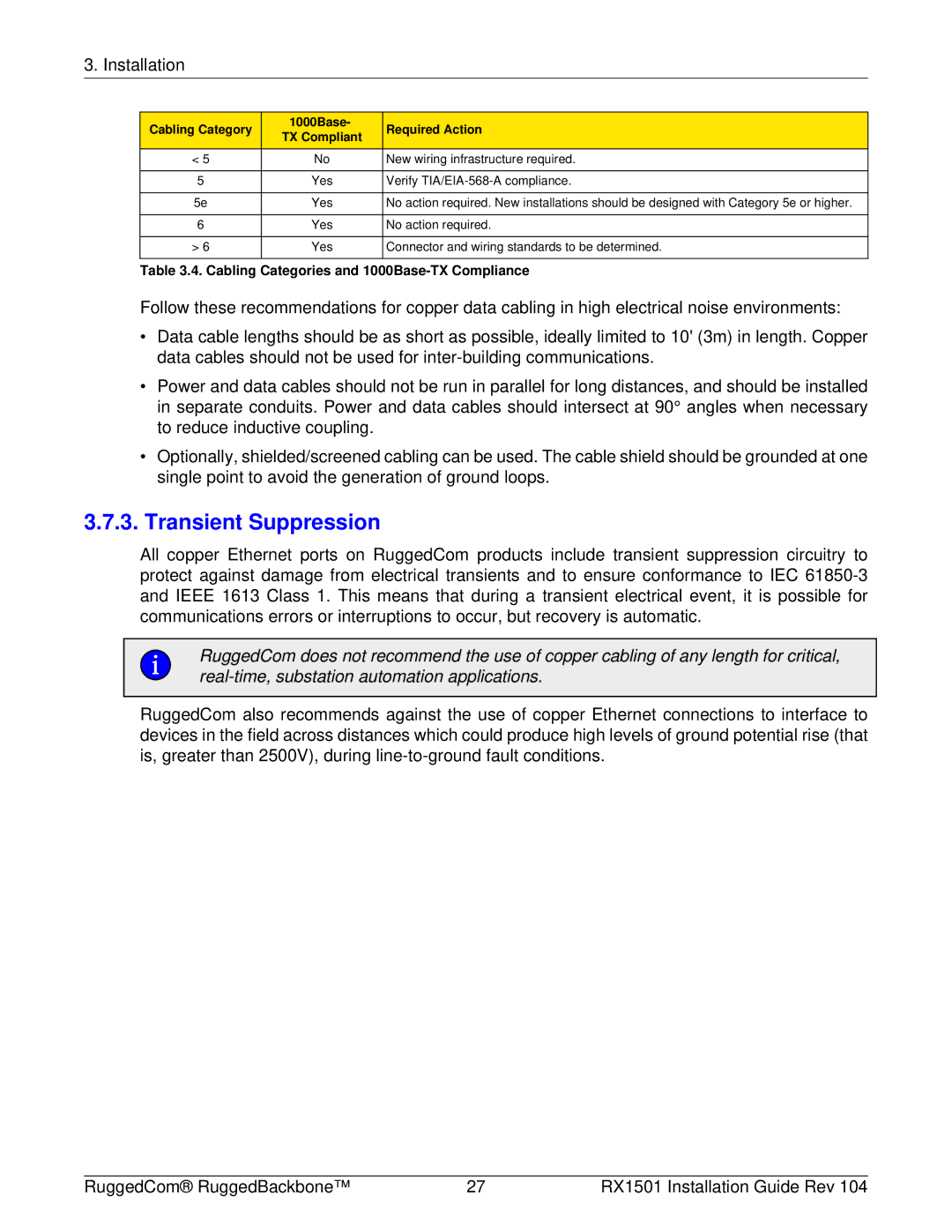
3. Installation
Cabling Category | 1000Base- | Required Action | |
TX Compliant | |||
|
| ||
< 5 | No | New wiring infrastructure required. | |
|
|
| |
5 | Yes | Verify | |
|
|
| |
5e | Yes | No action required. New installations should be designed with Category 5e or higher. | |
|
|
| |
6 | Yes | No action required. | |
|
|
| |
> 6 | Yes | Connector and wiring standards to be determined. | |
|
|
|
Table 3.4. Cabling Categories and
Follow these recommendations for copper data cabling in high electrical noise environments:
•Data cable lengths should be as short as possible, ideally limited to 10' (3m) in length. Copper data cables should not be used for
•Power and data cables should not be run in parallel for long distances, and should be installed in separate conduits. Power and data cables should intersect at 90° angles when necessary to reduce inductive coupling.
•Optionally, shielded/screened cabling can be used. The cable shield should be grounded at one single point to avoid the generation of ground loops.
3.7.3.Transient Suppression
All copper Ethernet ports on RuggedCom products include transient suppression circuitry to protect against damage from electrical transients and to ensure conformance to IEC
RuggedCom does not recommend the use of copper cabling of any length for critical,
RuggedCom also recommends against the use of copper Ethernet connections to interface to devices in the field across distances which could produce high levels of ground potential rise (that is, greater than 2500V), during
RuggedCom® RuggedBackbone™ | 27 | RX1501 Installation Guide Rev 104 |
